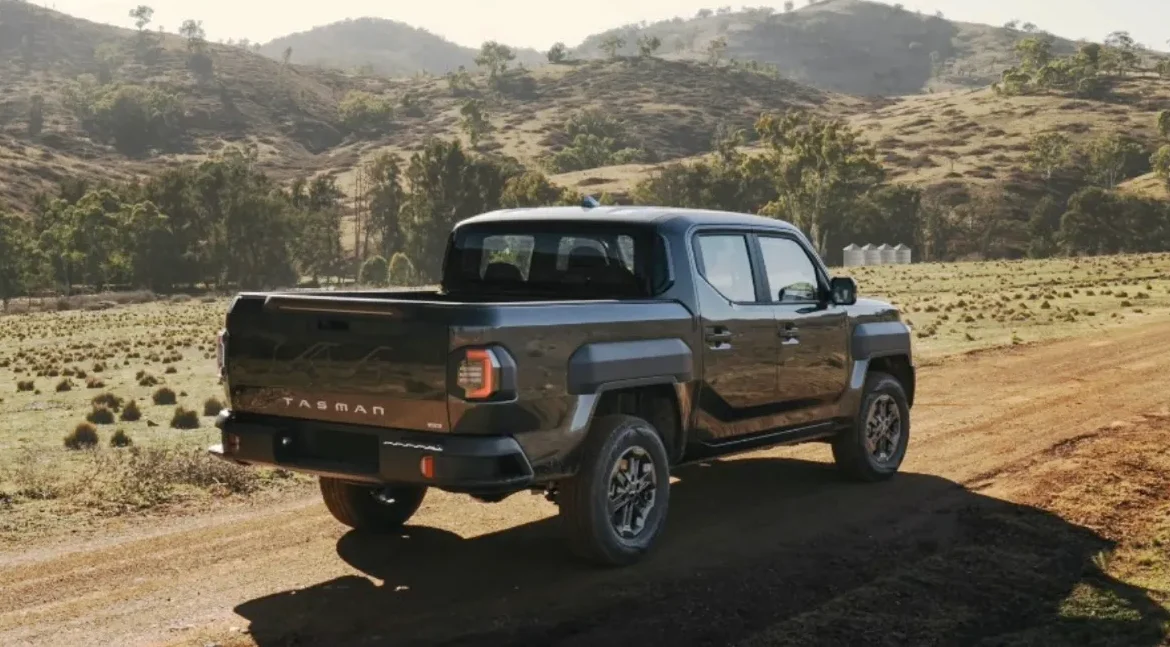2025 Kia Tasman Australia Review – Full In-Depth Breakdown
The 2025 Kia Tasman is Kia’s first ute, specifically designed for Australian conditions in mind. Here in our extended review, we delve into its history, interior, performance, off-road capability, safety, pricing, pros & cons, and verdict with expert analysis and real-world relevance.
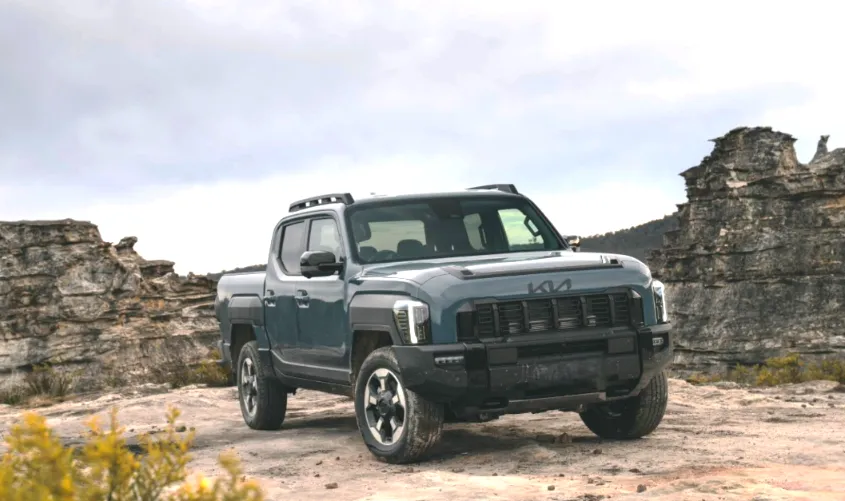
Introduction and History – How the Tasman Was Born
The Australian ute market is a fortress — Toyota Hilux, Ford Ranger, and Isuzu D-Max have dominated for decades. It takes more than a shiny badge to break in; it takes a purpose-built vehicle that knows what Australian ute buyers expect: toughness, payload, towing power, and the capacity to go down corrugated backroads without falling apart.
Kia spot the gap and setout on designing its first-ever ladder-frame utefrom scratch. Development commenced in 2021 under a project team shared between Kia’s Namyang R&D centre in Korea and Australian/New Zealand engineering teams. More than 1.5 million kilometres of cumulative testing took place:
Outback durability runs — hammering suspension and cooling systems on 45°C days in the Pilbara.
Icy Mountains cold-weather testing — confirming initial start reliability, traction, and cabin warmth in sub-zeroharse temperatures.
High-country load running — hauling maximum loads up steep, winding alpine roads to fine-tune braking and transmission cooling.
The Tasman name was deliberately selected. It recalls the Tasman Sea, an ocean of water to be reckoned with — the same as the Australian terrain the ute was designed to master. Dual-cab versions reached showrooms by April 2025. Single-cab and cab-chassis ones were included by Kia in August to gain further ground, specifically targeting trades, fleets, and rural buyers.
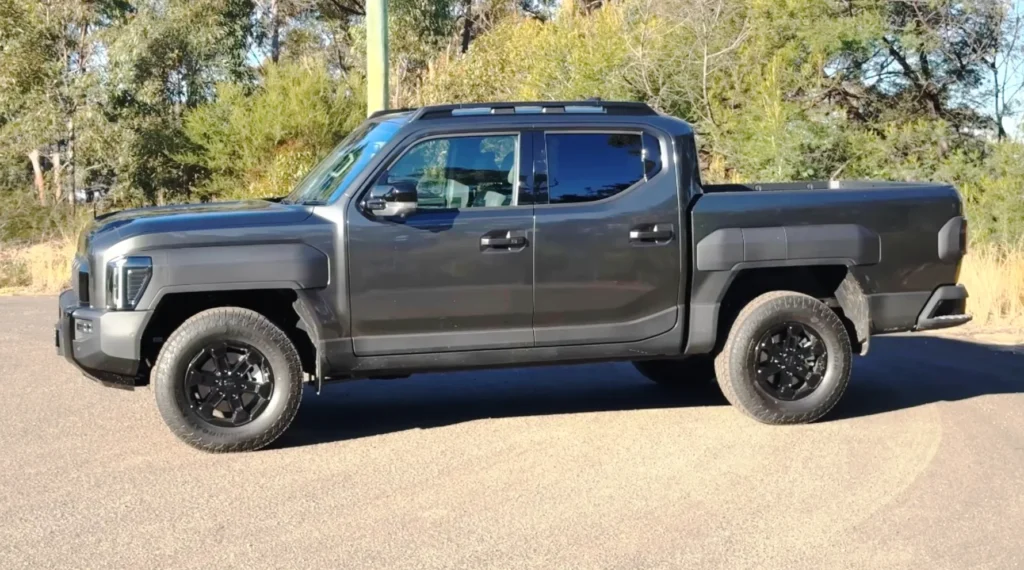
Interior – Build Quality and Features
While most competitors sacrifice cabin ambiance for hose-out capability, Kia aimed to marry workhorse reliability with SUV comfort in the Tasman’s interior.
Materials and Build Quality:
Soft-touch surfaces cover dash and top door trims to minimize glare and heat soak on hot summer days.
Switchgear is designed with firm, mechanical feel.
Taut, uniform panel gaps indicate attention to build — no sloppy trims or creaks after a week on loose roads.
Technology and Layout:
12.3-inch driver display — intuitive, high-resolution gauges with customizable layouts for towing, off-road, or economy modes.
5-inch HVAC panel — separate climate control screen to prevent menu-diving.
12.3-inch infotainment system — Kia Connect navigation with live traffic and over-the-air updates, wireless Apple CarPlay/Android Auto.
Comfort and Space:
Rear seat legroom of 940 mm is plentiful for the class; rear backrests recline up to 30°.
Noise insulation is very high — cabin conversation is effortless even at highway speeds with a load in the tray.
Several storage locations: under-seat bins, overhead centre console, twin gloveboxes, and fold-flat centre console table for laptops.
Practical Extras:
Optional 110V inverter for power tools.
Bed-side fold-out tables (some trims) for rapid jobsite setups.
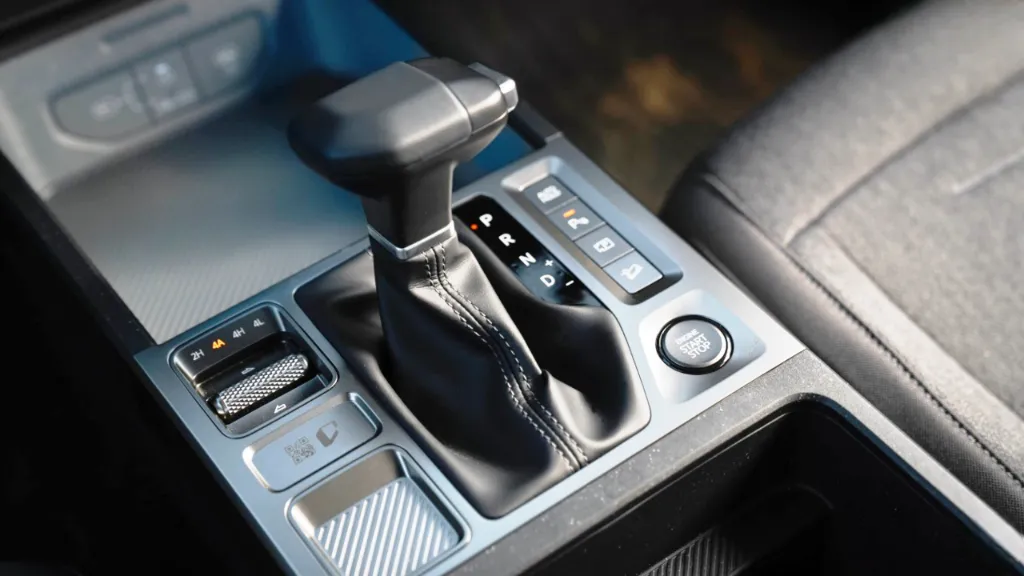
Performance – Engine, Transmission and Driving Dynamics
All Australian Tasmans are driven by the 2.2-litre Smartstream turbo-diesel:
Power: 154 kW (210 hp)
Torque: 440 Nm (Peak from 1,750–2,750 rpm)
Transmissions: 6-speed manual or 8-speed automatic
Drive: Rear-wheel drive (4×2) or part-time four-wheel drive (4×4)
On-Road Behaviour:
The Tasman’s steering calibration is crisp for a ladder-frame ute, with less mid-corner body roll than one might anticipate. Ride comfort is taut when unloaded but settles when laden, to make it more comfortable for long-distance touring than some competitors.
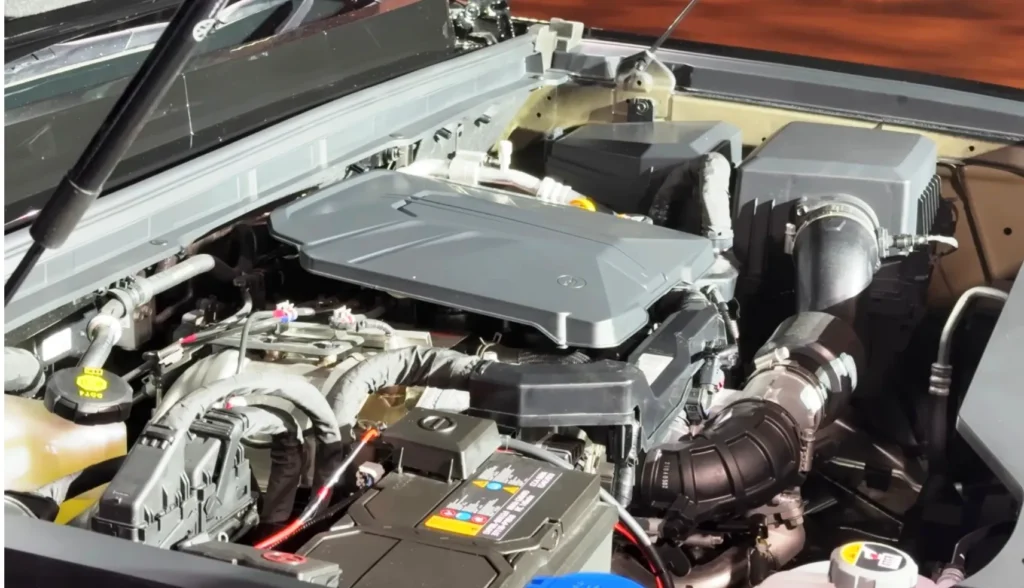
Off-Road Capability:
4×4 models come with high- and low-range transfer case gearing, with locking rear differential standard on SX+, X-Line, and X-Pro models. Terrain modes — Eco, Smart, Sand, Mud, and Snow — refine throttle, transmission, and stability control mapping. The X-Pro introduces Rock mode for slow, technical ascents.
Towing and Payload:
Towing: 3,500 kg braked (segment benchmark)
Payload: 1,000–1,150 kg dependent on variant
Cooling systems are engineered to handle prolonged towing at highway speeds in 40°C+ environments — a key specification for the Australian market.
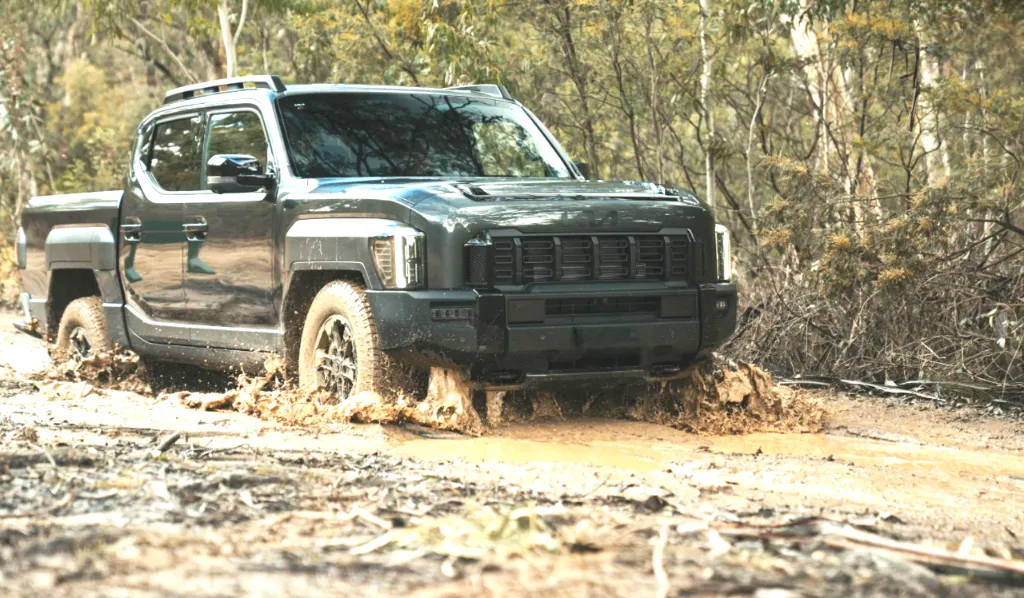
Safety Features
The Tasman is equipped with Kia’s complete Drive Wise safety suite:
Autonomous Emergency Braking with cyclist and pedestrian detection
Adaptive Cruise Control with stop-and-go function
Lane Keeping Assist & Lane Following Assist
Blind-Spot Collision Avoidance
Rear Cross-Traffic Collision Avoidance
Driver Attention Alert
Seven airbags (front, side, curtain, and driver’s knee)
Surround View Monitor with Ground View — shows an under-vehicle real-time feed to prevent rocks or obstacles
The chassis is made from high-tensile steel with strengthened crash load paths for ANCAP 5-star performance.
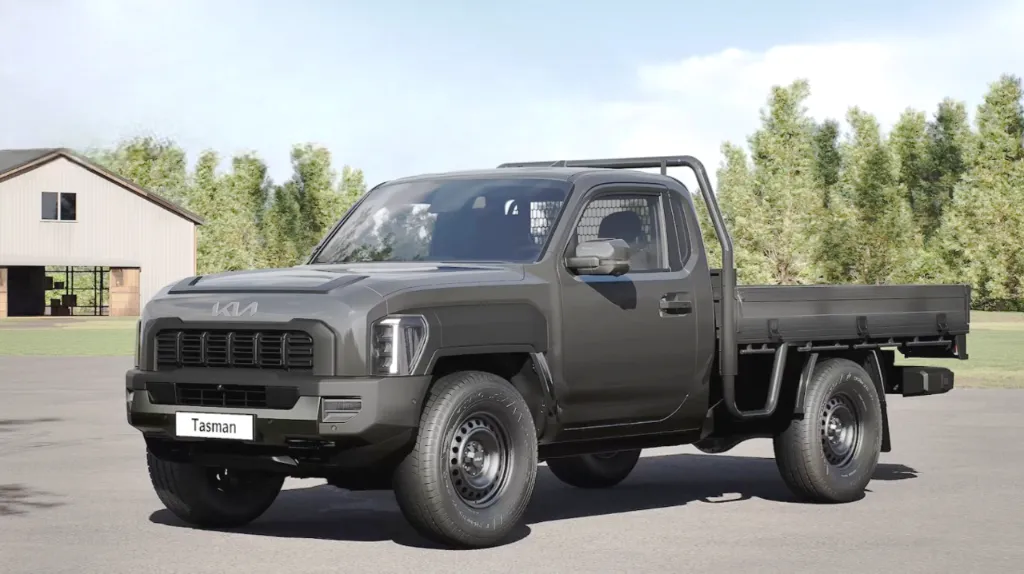
Capabilities – Built for Real Work
The Tasman’s platform combines heavy-duty strength with versatility:
Ground Clearance: up to 252 mm (X-Pro)
Approach Angle: 30° (X-Pro)
Departure Angle: 25°
Tray Dimensions: 1.572 m long, 1,173 L capacity, pallet-width capable
Water Wading: Compatible with factory snorkel kit
Accessories: Over 40 OEM options, ranging from canopies to recovery equipment
This makes it just as suitable as a jobsite workhorse or outback tourer.
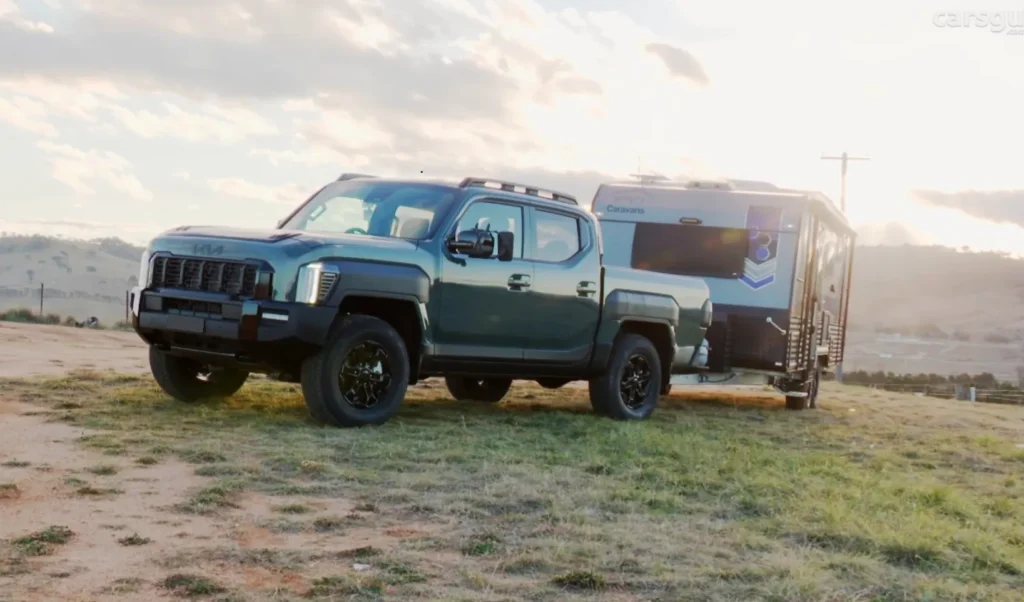
Pricing and Availability – August 2025
S 4×2 Dual-Cab: $42,990 + ORC ($46,490 drive-away)
SX/SX+: $49,990–$59,990 + ORC
X-Line/X-Pro 4×4: $64,990–$74,990 + ORC ($77,990 drive-away)
Single-cab and cab-chassis models (4×2 and 4×4) released in August 2025, for trade and fleet buyers.
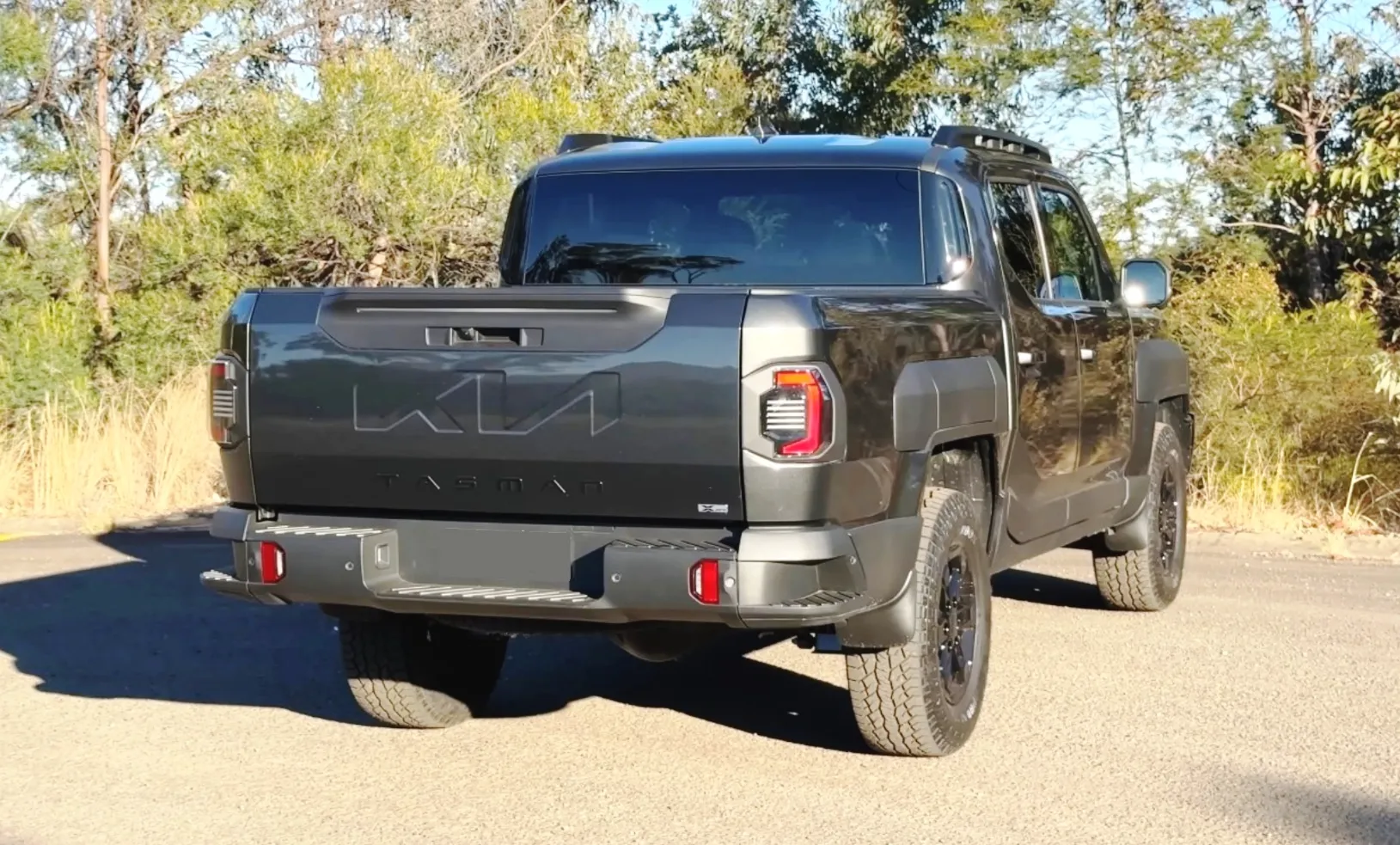
Pros and Cons
Pros:
Competitive payload and towing capabilities
Luxury cabin quality and technology
Extensive safety package standard
Wide accessory range from launch
Priced to compete with big players
Cons:
Diesel only engine option in AU market
Styling potentially controversial
No long-term Aussie reliability provenance yet
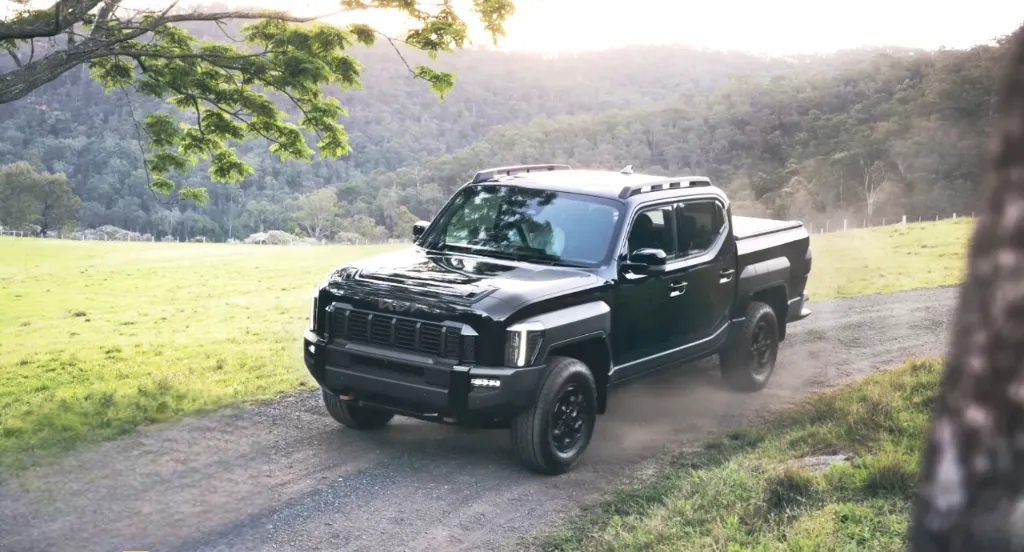
Final Verdict
The 2025 Kia Tasman is anconfident first entry into the Australian big ute market. Kia has sidestepped the pitfall of producing a “global” ute that isn’t fit for local requirements — rather, they’ve designed to the toughest conditions purchasers here will subject it to.
Its blend of SUV-style interior comfort, robust towing and payload capacity, aggressive pricing, and broad safety features makes it a genuine challenger to segment leaders.
The only issue is whether brand loyalty will hinder its take-up. For those prepared to venture out of the normal Hilux-Ranger-Isuzu shortlist, the Tasman provides genuine capability with Kia’s warranty and expanding service network to back it up.
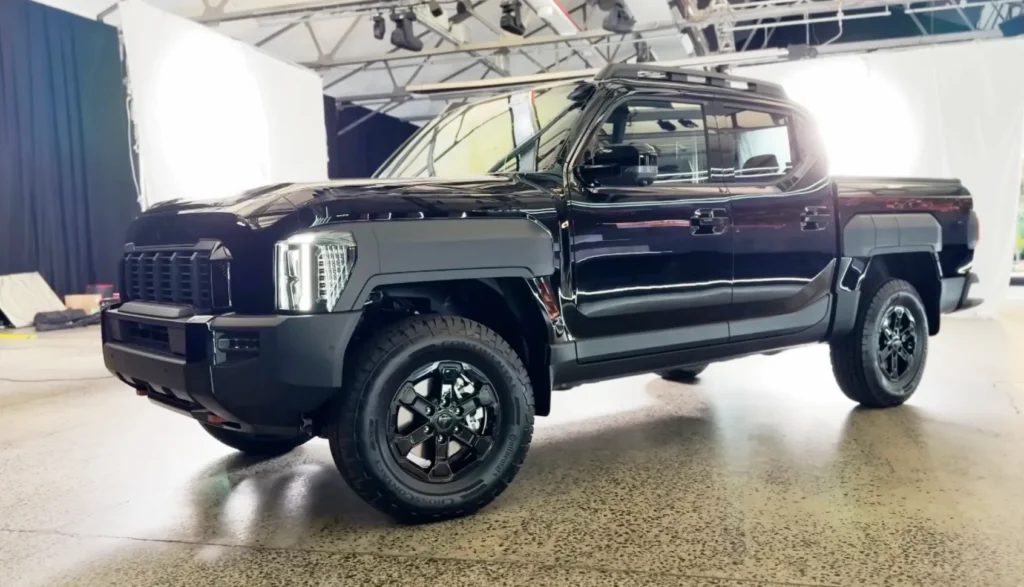
FAQs – 2025 Kia Tasman
Q: When does the Kia Tasman go on sale in Australia?
A: April 2025 for dual-cab, August 2025 for single-cab and cab-chassis.
Q: What is the towing capacity?
A: 3,500 kg braked.
Q: Is it available in petrol?
A: No in Australia; there is a petrol engine in some international markets.
Q: How expensive is it?
A: From $42,990 + ORC for the S 4×2 dual-cab.
Q: Is it any good off-road?
A: Yes — 4×4 models include low-range gearing, several terrain modes, locking rear diff, and up to 252 mm clearance.
